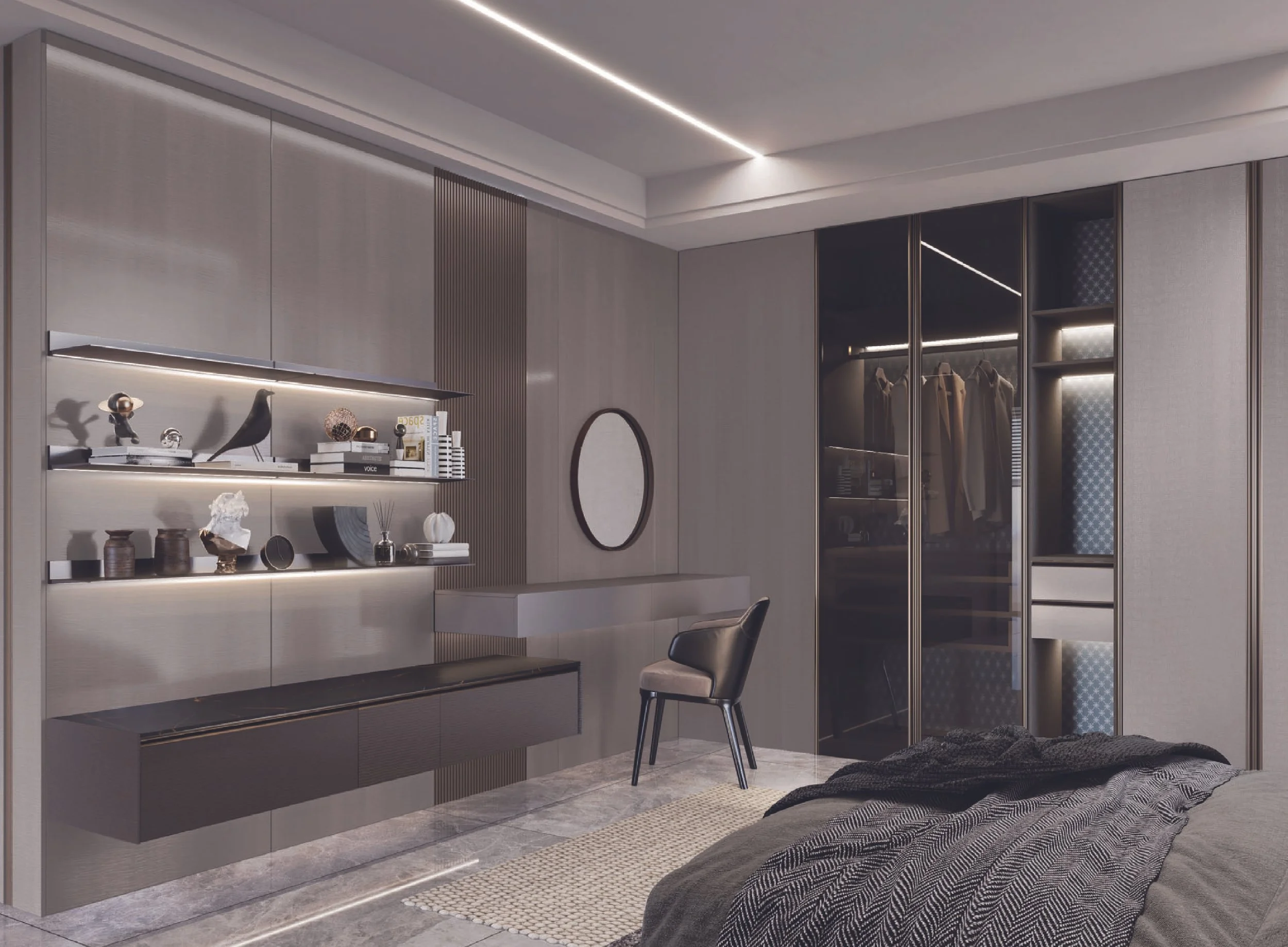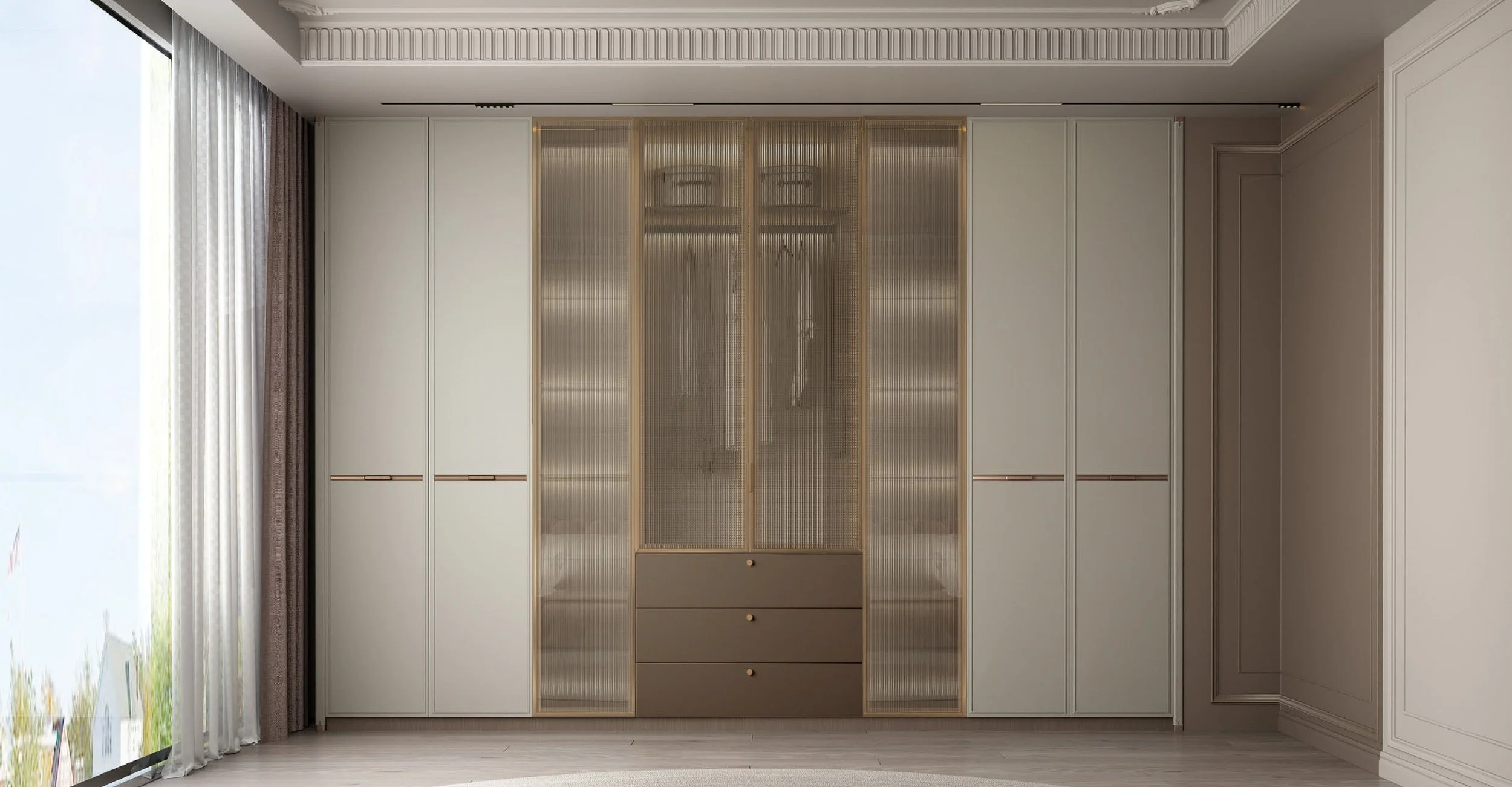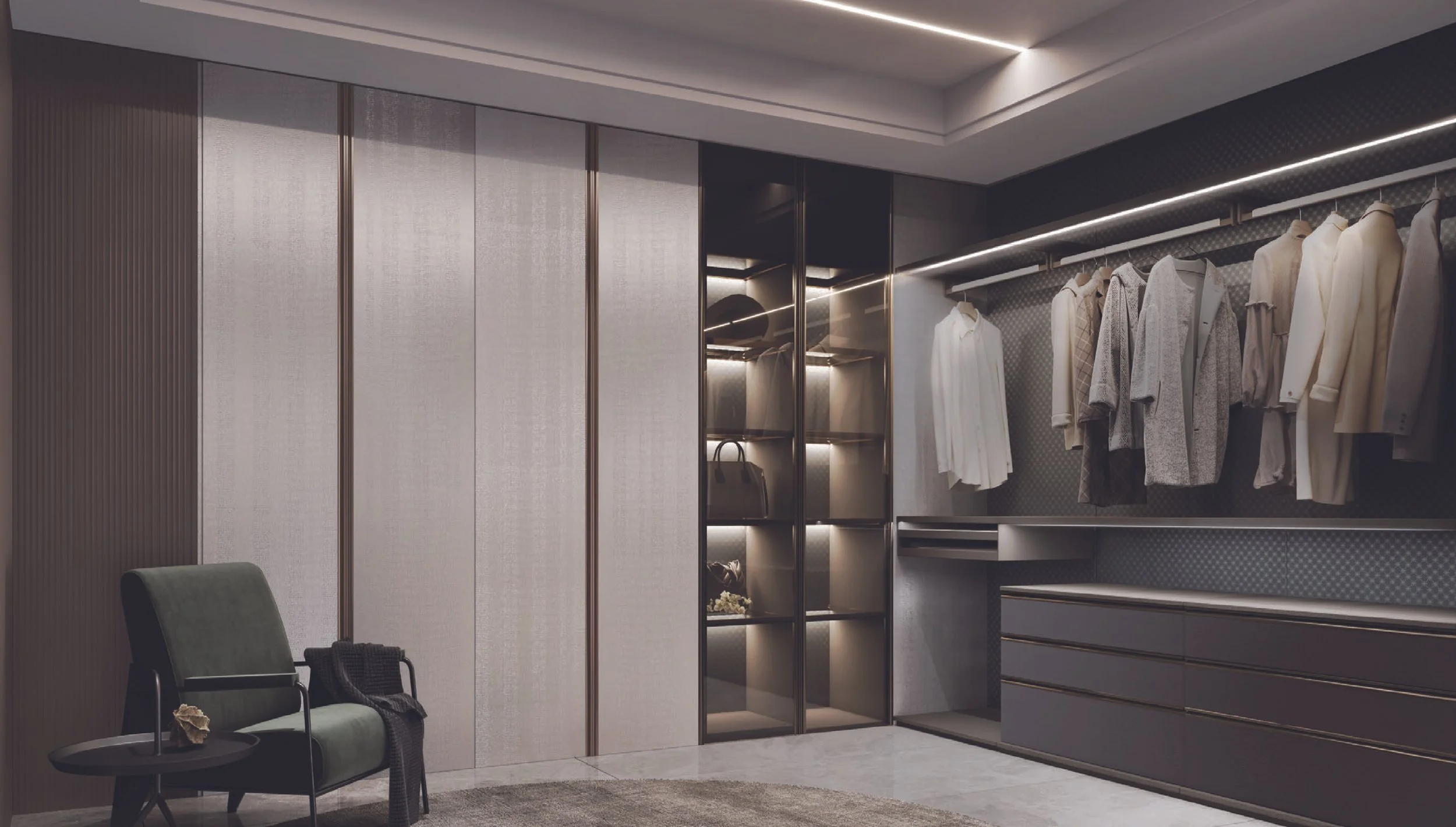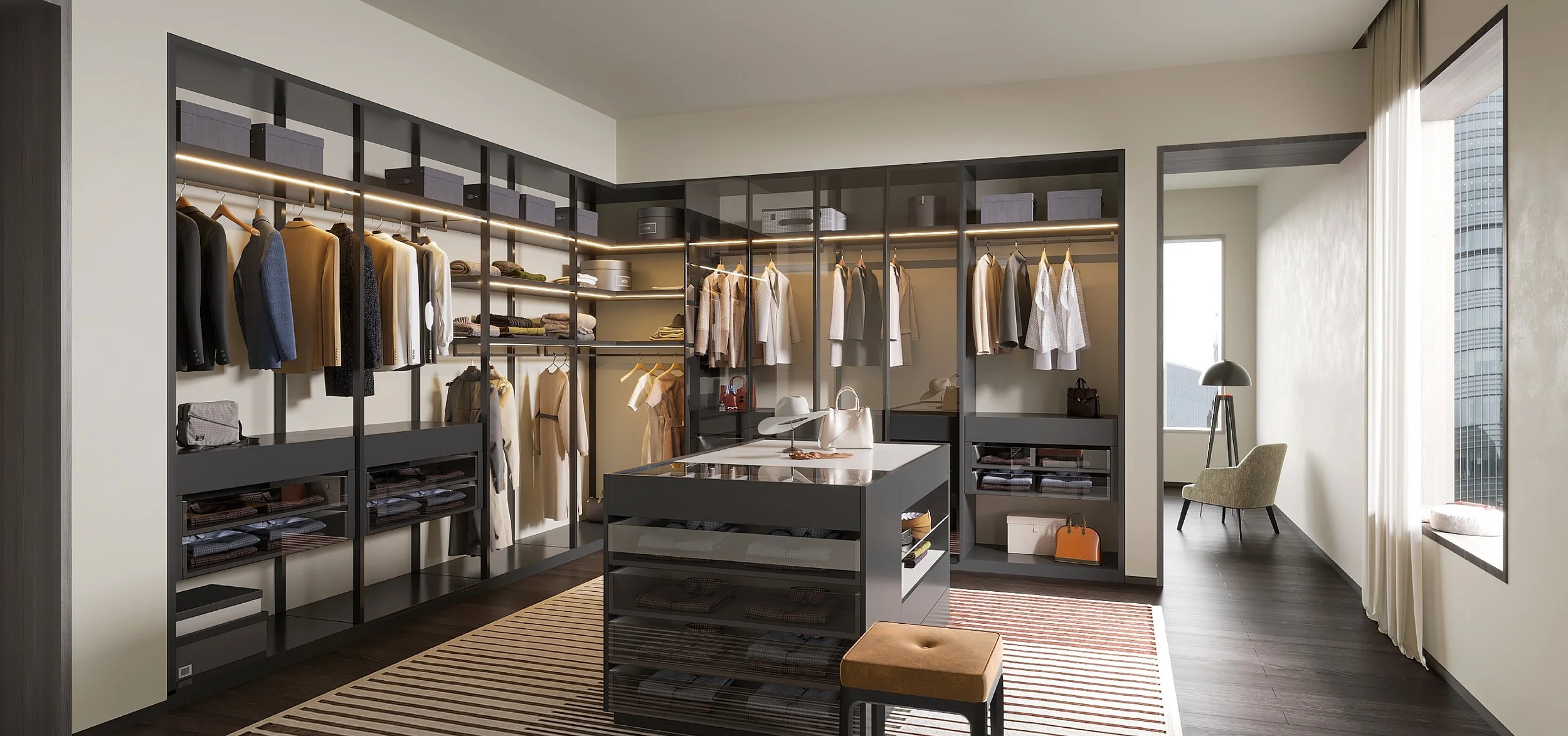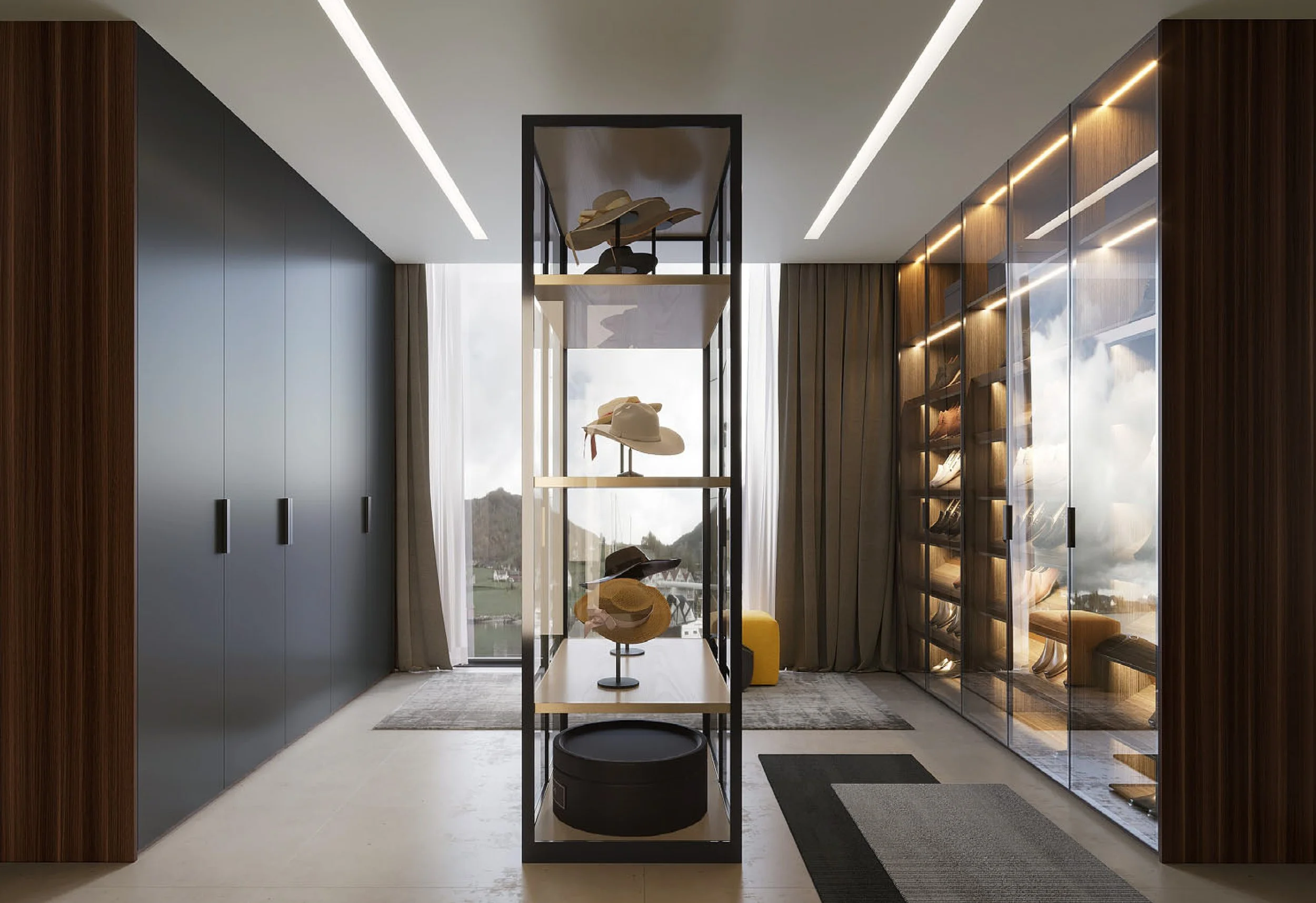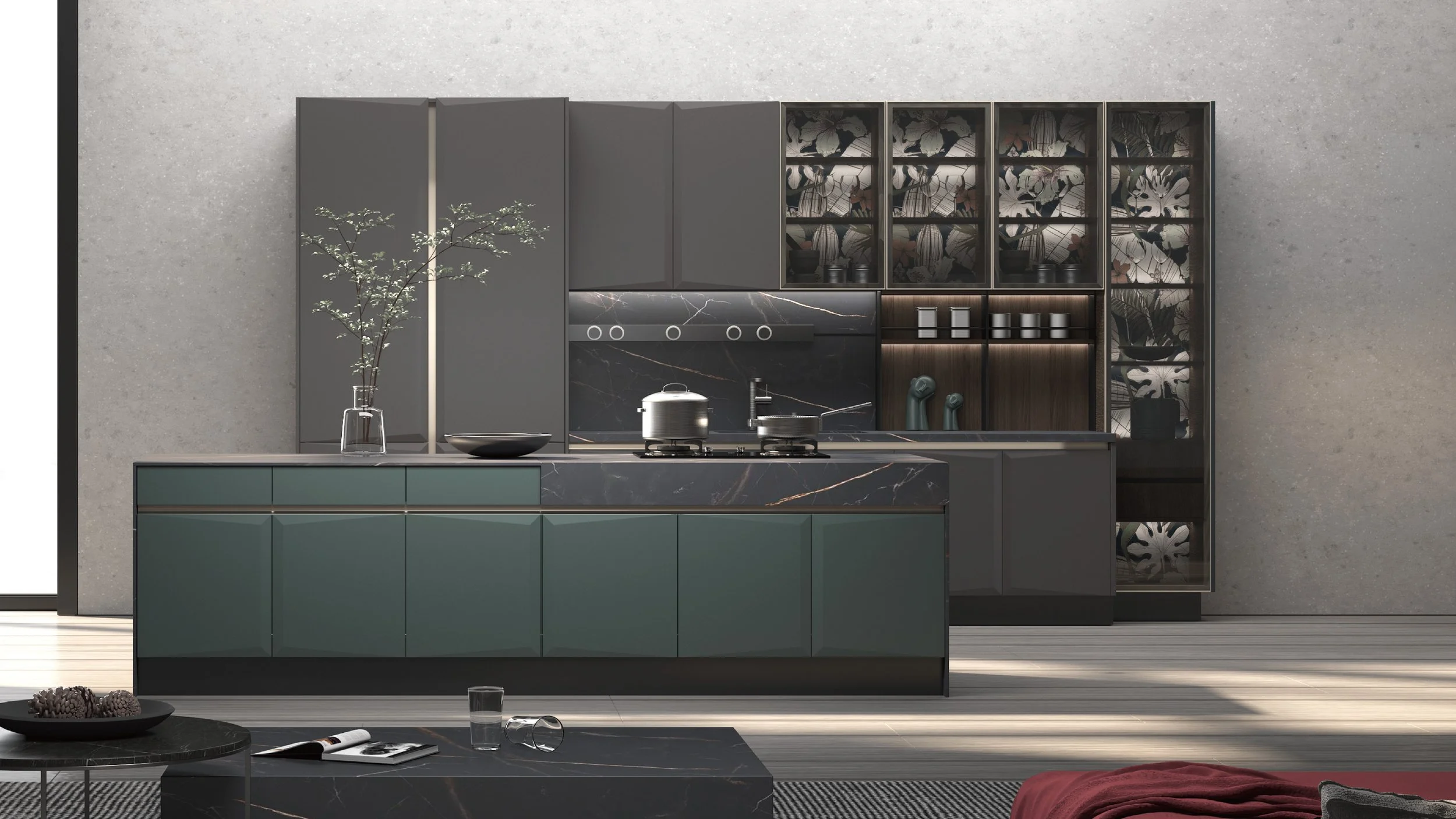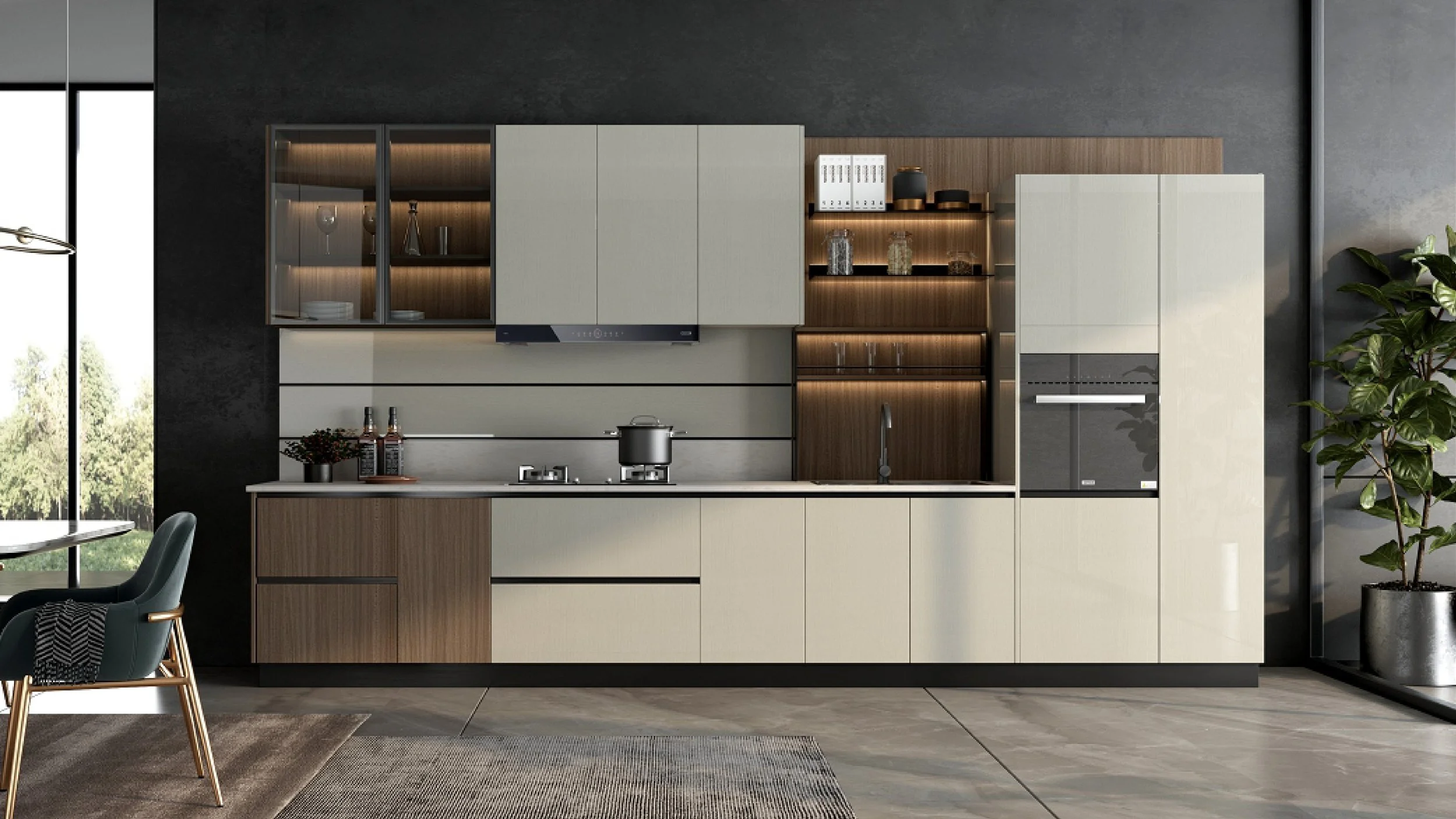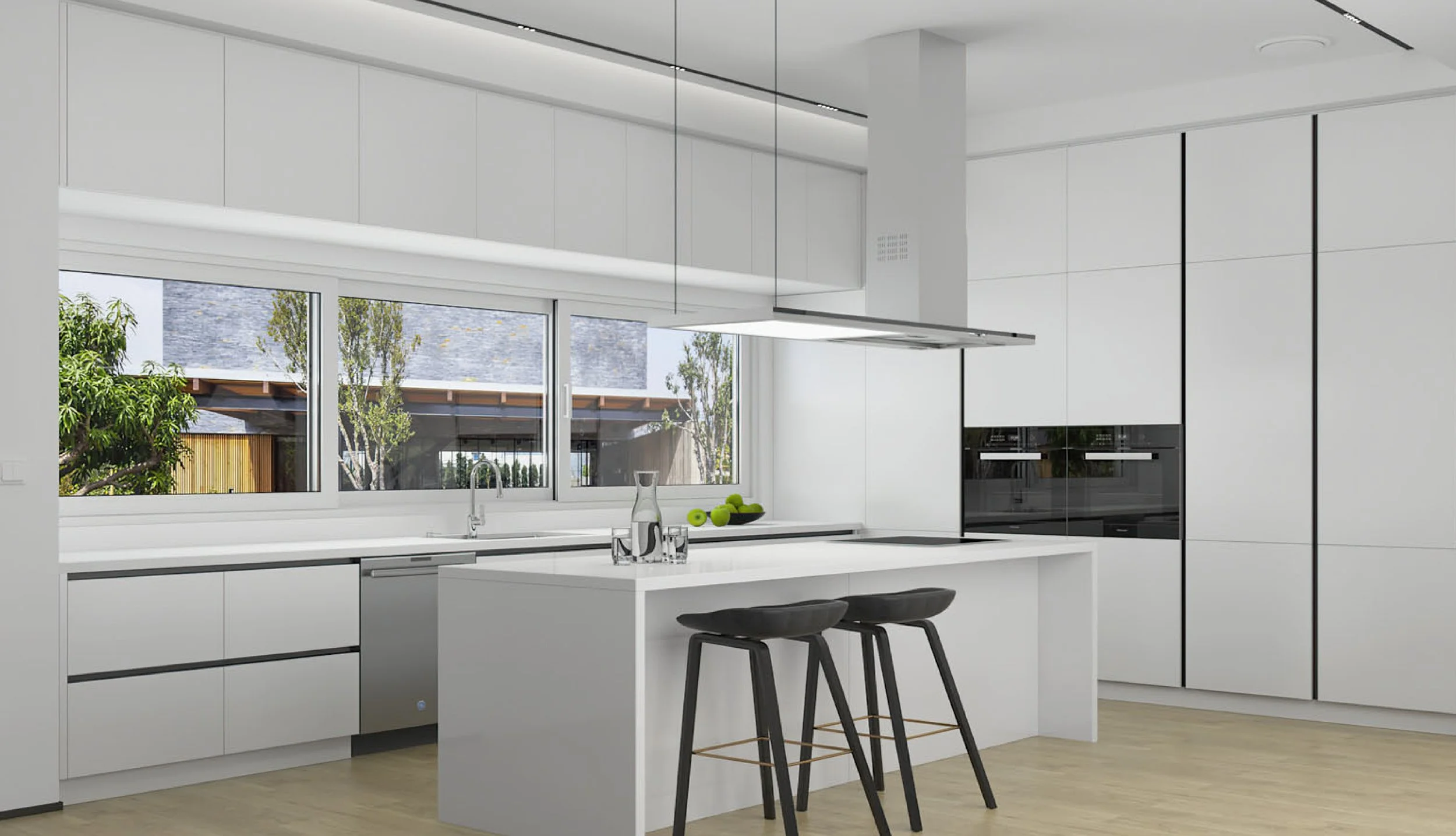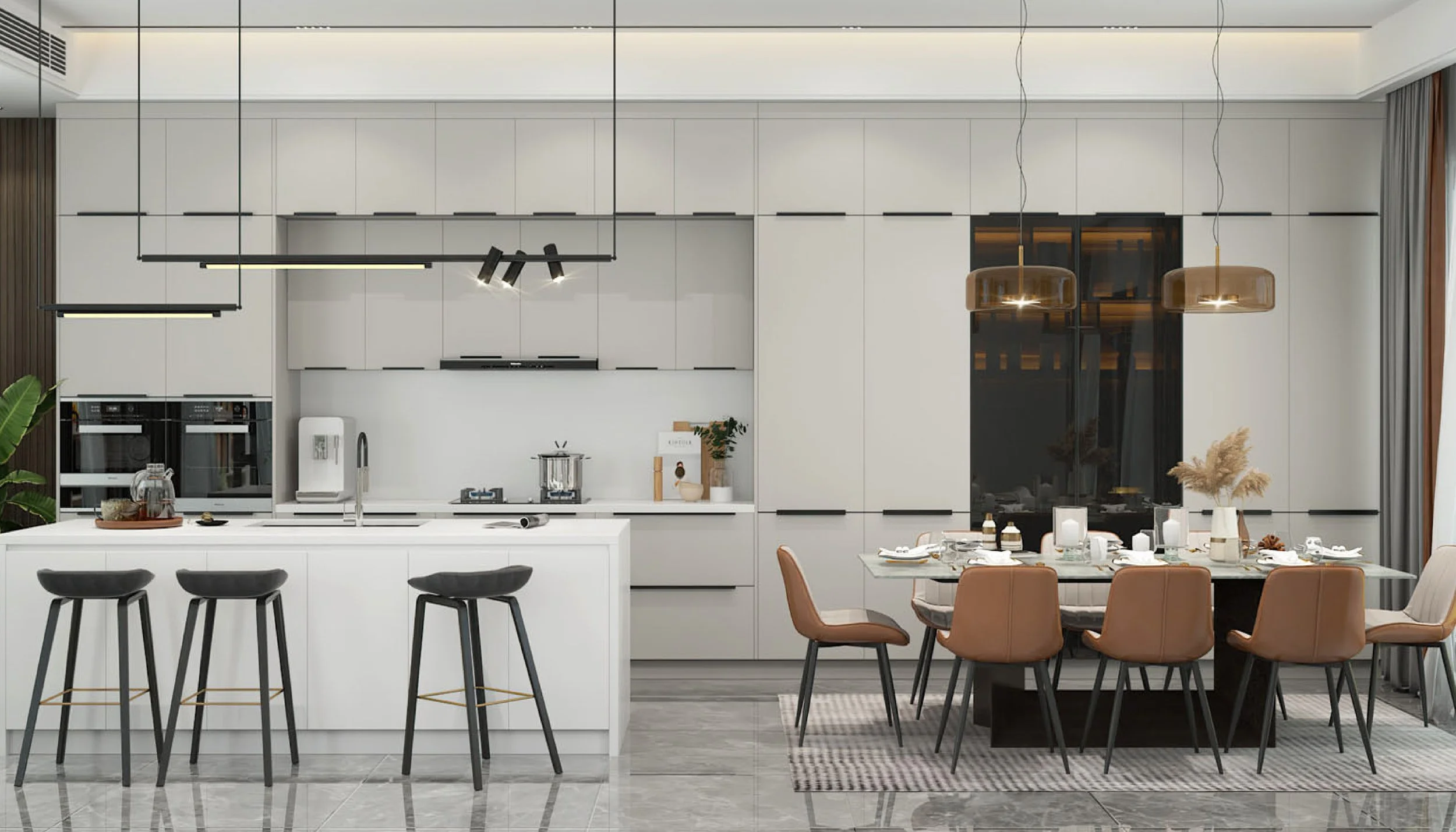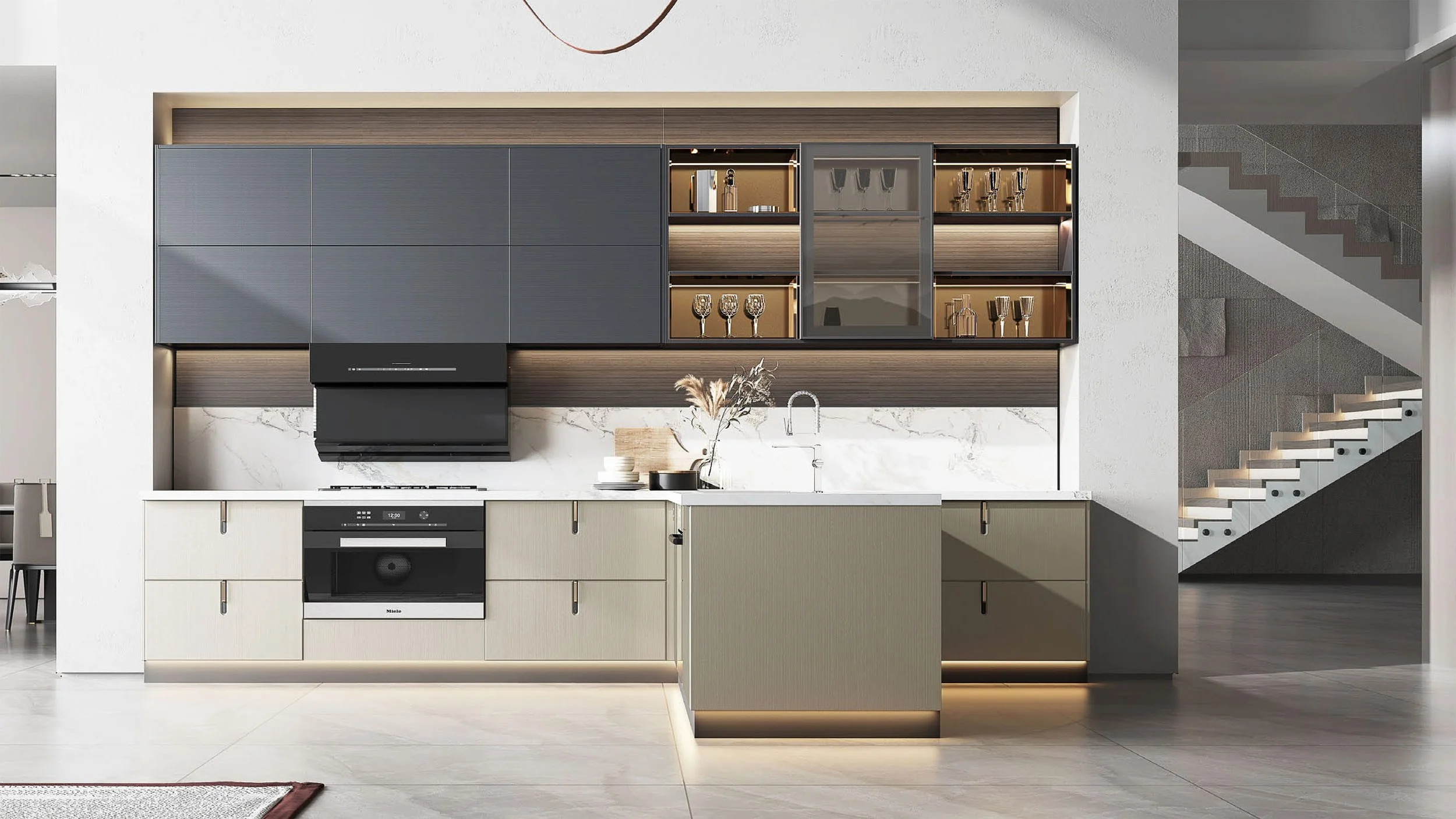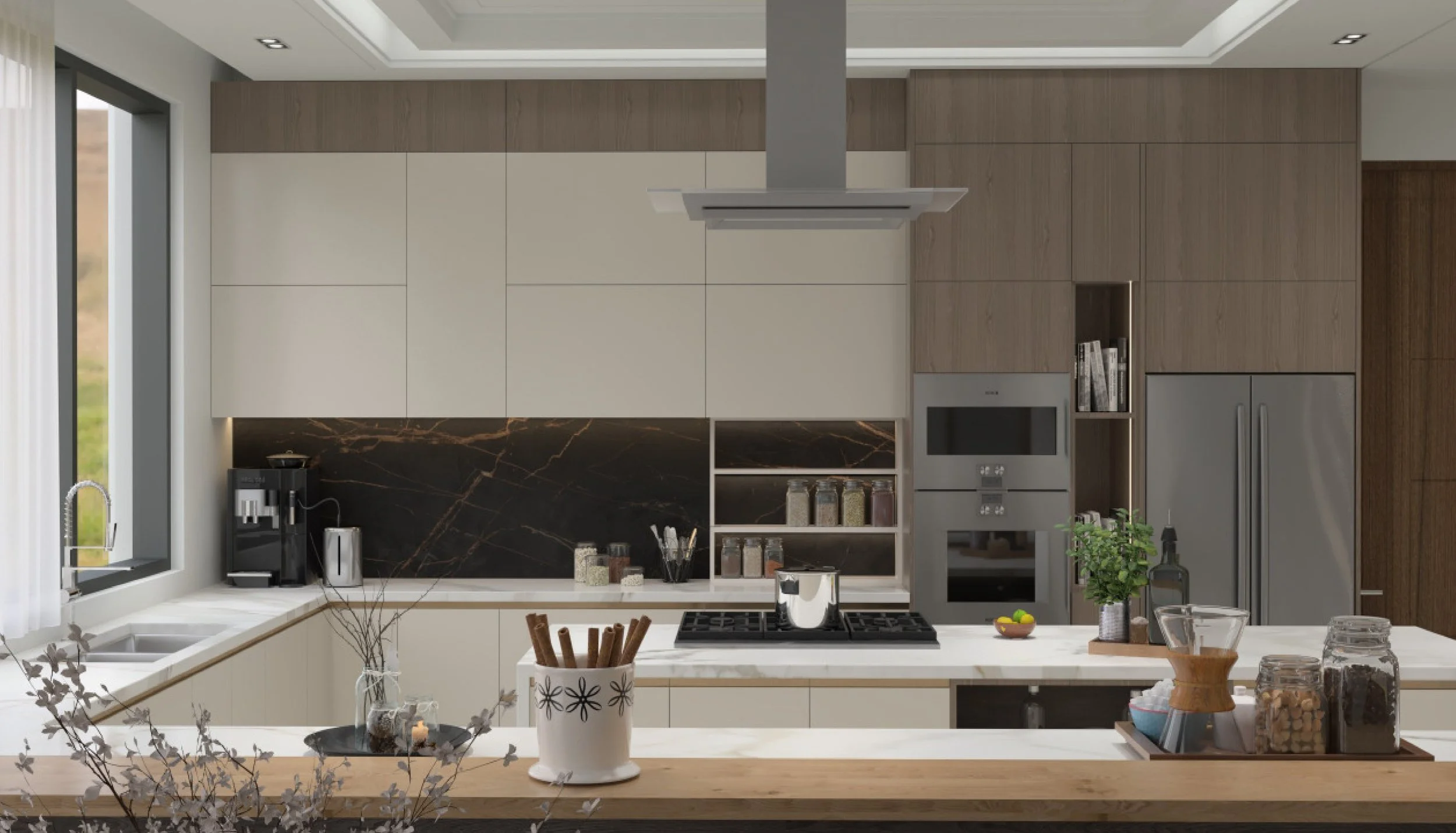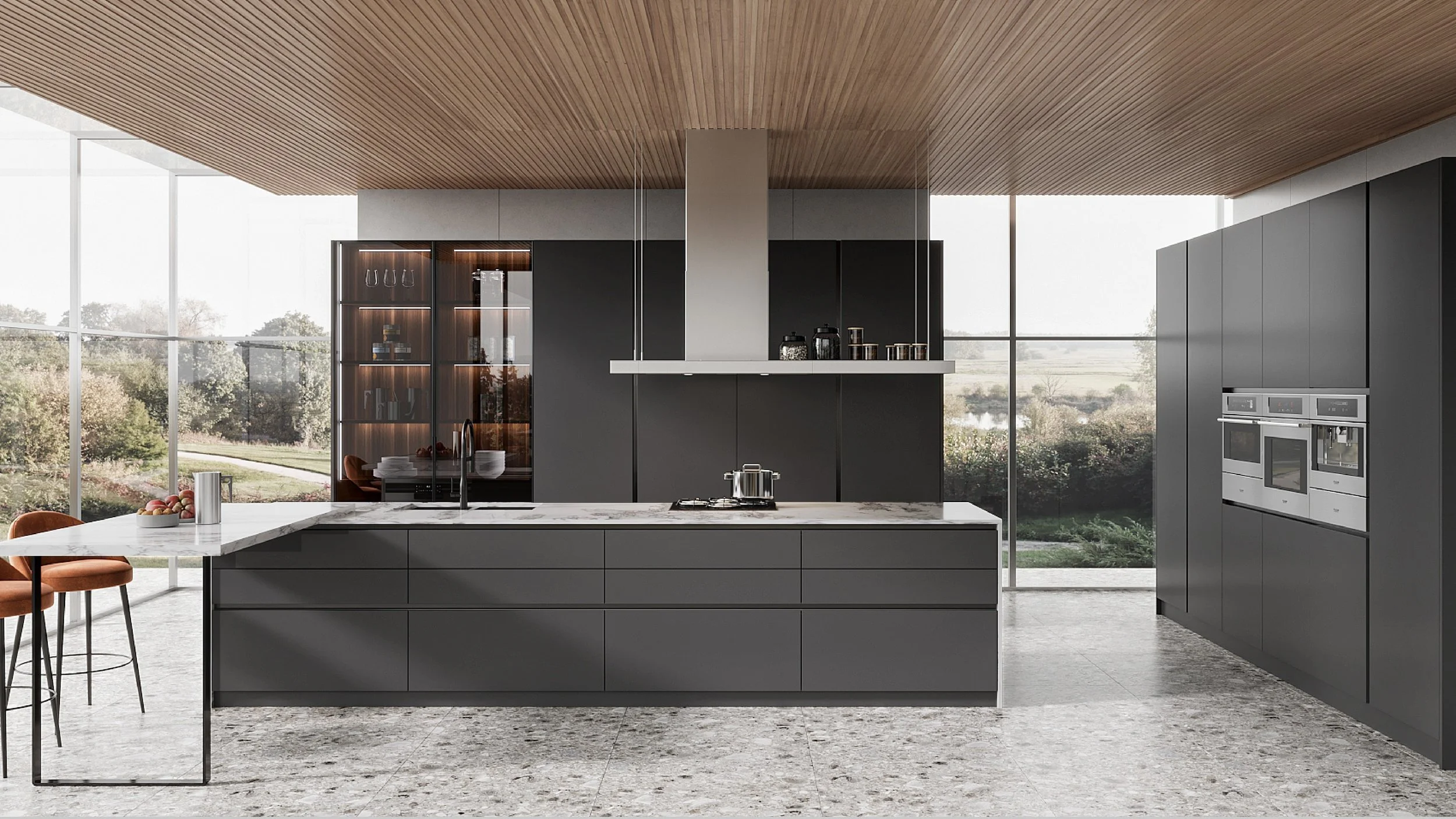Kitchen Splashback Ideas: Luxury Looks & Low-Maintenance Finishes
A splashback is more than a wipe-clean zone; it’s the backdrop that sets the tone for your entire kitchen. Choose materials that balance beauty, durability and easy care, and your space will feel refined every day. Eco Squared designs, supplies and installs European-style cabinetry across the Sutherland Shire & surrounds, guiding you to a splashback that elevates your finishes and lighting.
Why your splashback matters
Visual anchor: ties benchtop, cabinetry and hardware together.
Light play: reflective or softly textured surfaces can brighten compact rooms.
Care & longevity: grout, seams and edges determine how easy your kitchen is to keep pristine.
Porcelain / Sintered Stone (grout-free luxury)
Look: marble, limestone, concrete or metal effects with seamless panels.
Why we love it: ultra-low maintenance, heat and stain resistant; perfect for a high-end, continuous look behind cooktops and window splashbacks.
Design notes: book-match veins on feature walls or islands for a bespoke finish.
Natural Stone (timeless character)
Look: unique veining and movement, granite, quartzite, dolomite, marble.
Why we love it: nothing matches real stone for depth and individuality.
Design notes: seal well; select slabs in person to hand-pick veining near the cooktop or rangehood.
Glass (light, bright, easy-clean)
Look: glossy reflection in any colour, metallics or mirror tint.
Why we love it: wipes clean in seconds; bounces light into compact Cronulla apartments or Miranda townhomes.
Design notes: consider low-iron glass for truer whites and neutrals; mirror adds depth but shows splashes, great for bars or butler’s pantries.
Large-Format Tile (statement with minimal grout)
Look: stone, zellige-style texture or terrazzo in 600×1200 mm or similar.
Why we love it: luxurious feel with fewer grout lines; budget-friendlier than slab stone.
Design notes: specify narrow grout joints; align tiles with benchtop edges for a tailored look.
Mosaic & Kit-Kat (texture that whispers “designer”)
Look: finger tiles, herringbone, petite hex or marble mosaics.
Why we love it: tactile, boutique feel, beautiful in Caringbah family kitchens and coastal schemes.
Design notes: pick stain-resistant grout; pair with matte cabinetry to balance shine.
Stainless Steel (chef-grade cool)
Look: professional sheen; brushed or patterned finishes.
Why we love it: heatproof and hygienic behind cooktops; suits appliance walls.
Design notes: shows patina over time, intentional and architectural when planned with the rest of the palette.
Painted / VJ Panel (budget-smart charm)
Look: V-groove or smooth painted panels for cottage or coastal kitchens.
Why we love it: cost-effective and fresh; easy to repaint.
Design notes: keep away from direct high-heat zones; use semi-gloss or enamel for durability.
Colour & lighting: get the glow right
Choose warm-neutral whites, pale timbers and gentle veining for airy small kitchens.
For drama, run dark porcelain up to the rangehood and soften with warm brass or bronze hardware.
Add under-cabinet LED strips to reveal texture and make cleaning effortless.
Height, edges & outlets (the details that feel high-end)
Full height to underside of overheads for a crisp finish; take slab to the ceiling behind a feature rangehood.
Keep edges minimal with mitres or slim trims colour-matched to grout/stone.
Plan GPOs (power points) in line with tile joints or use pop-up power on benches to keep the splashback uninterrupted.
Good / Better / Best pathways
Good: Large-format tile with narrow grout, under-cabinet LEDs.
Better: Porcelain/sintered slab, book-matched corners, colour-matched outlets.
Best: Stone-look porcelain wrapping benchtop, splashback and upstand with integrated shelf niche and scene-controlled lighting.
Common mistakes to avoid
Busy patterns competing with strong benchtop veining.
Too many grout lines in high-mess zones.
No lighting plan, even premium surfaces fall flat without layered light.
Outlets sprayed randomly across feature veins (plan them early).
Local design, tidy installation
From palette selection to templating and fit, Eco Squared coordinates cabinetry, splashback and lighting so everything lands perfectly. We service the Sutherland Shire & surrounds, supporting Caringbah, Cronulla, Miranda, Gymea, and nearby suburbs, with precise and tidy installations.
Transform Your Space with Eco Squared
Embrace the elegance and functionality of European design with Eco Squared. Our Oppolia partnership provides access to premium materials and cutting-edge manufacturing, tailored for the way Sydney lives.
Get a Free SMART QUOTE
Film a quick 360° video and Text/WhatsApp 0466 119 712 (no home visit required).
Prefer email? info@eco2.com.au
FAQs
What is the easiest splashback to keep clean?
Porcelain/sintered slabs and glass are grout-free and wipe down quickly. Both resist stains and heat, making them ideal behind cooktops in busy kitchens.
What splashback suits a small kitchen?
Use light, low-sheen surfaces (glass or pale porcelain) to reflect light and visually expand the room. Keep grout lines minimal; pair with under-cabinet LEDs.
Is a stone splashback worth it?
If you want luxury with low maintenance, choose porcelain/sintered stone for the stone look without porous care requirements. Natural stone offers unmatched character if you’re happy to seal and maintain it.
How high should a kitchen splashback be?
At least to the underside of overheads; continue to the rangehood or ceiling for a seamless statement wall, especially in open-plan spaces.
Can I mix tile and slab?
Yes. Many clients run slab behind the cooktop for easy cleaning and textured tile elsewhere for warmth and interest. Keep colours coordinated for cohesion.


